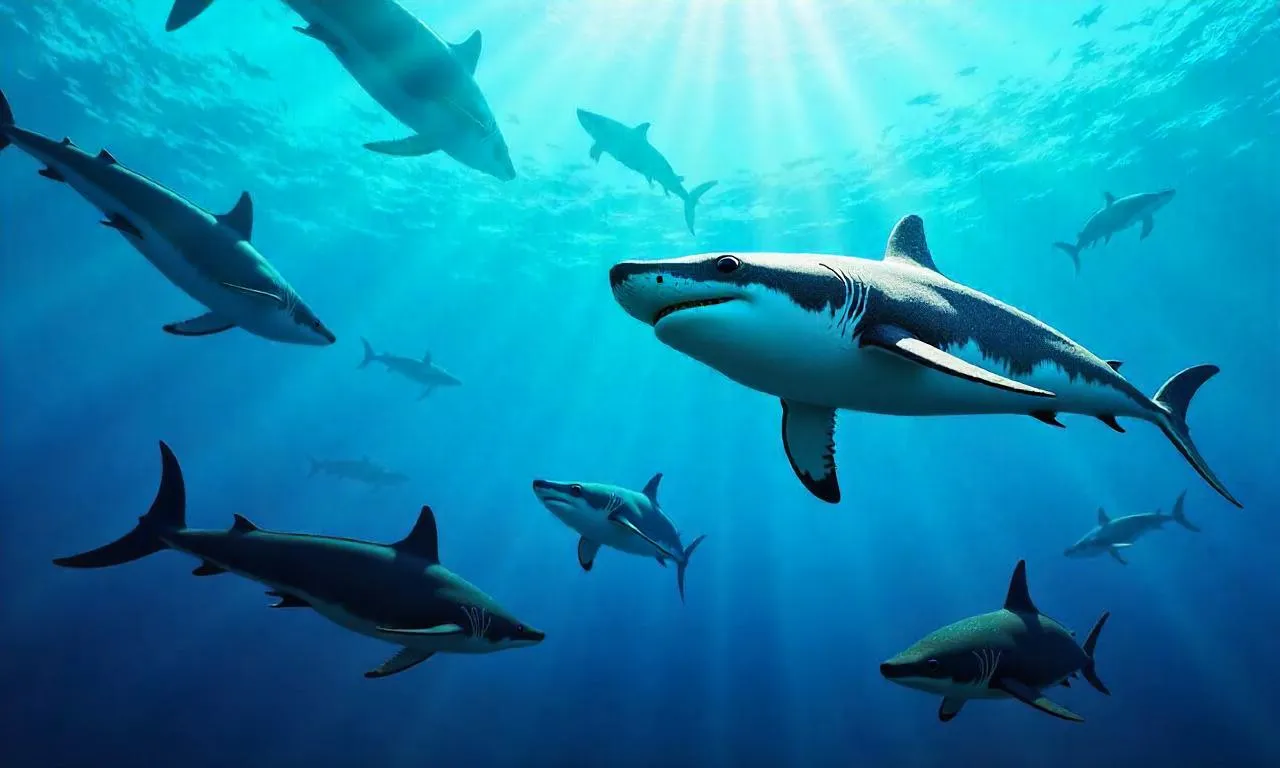The concept of most intelligent animals in the world has captivated scientists, animal lovers, and curious minds for decades. Intelligence in animals isn’t just about solving puzzles or recognizing human gestures—it encompasses a wide range of cognitive abilities, from problem-solving and communication to emotional depth and adaptability. While humans often consider themselves the pinnacle of intelligence, several other species have demonstrated remarkable capabilities that challenge this assumption. This article explores the most intelligent animals in the world, delving into their unique traits, behaviors, and the fascinating ways they navigate their environments. Whether you’re a biologist, a pet owner, or simply a curious reader, these insights will deepen your appreciation for the complex minds that share our planet.
Table of Contents
ToggleSection Utama
The intelligence of animals is a multifaceted topic that spans across different species and disciplines. From the social complexity of primates to the problem-solving skills of octopuses, the natural world is filled with examples of creatures that exhibit intelligence in ways that often surprise us. Understanding most intelligent animals in the world requires more than just identifying their ability to learn tricks or mimic human speech—it involves examining their cognitive processes, memory, emotional range, and even their capacity for abstract thought. This section will highlight some of the most notable examples, starting with primates, which are often regarded as the closest relatives to humans in terms of intelligence.
Subjudul 1: Primates – The Social Superstars
Primates, particularly chimpanzees, orangutans, and bonobos, are frequently cited as some of the most intelligent animals in the world. Their intelligence is not just measured by their ability to solve complex tasks but by their social structures, communication skills, and adaptability. Chimpanzees, for example, are known for their tool-use abilities, such as using sticks to extract termites from mounds or modifying branches to create sponges for water. These actions require not only physical dexterity but also an understanding of cause and effect.
Sub-subjudul 1.1: Tool Use and Innovation
Chimpanzees are not the only primates that display tool use. Orangutans, for instance, have been observed using leaves as gloves to grasp objects more easily. Bonobos, another close relative of humans, exhibit a unique form of problem-solving by using tools to access food in a variety of ways. These behaviors suggest that primates have a high level of cognitive flexibility and creativity. In a study published in Science, researchers noted that chimpanzees can learn to use tools through observation, much like humans. This ability to imitate and adapt is a key indicator of their advanced intelligence.
Sub-subjudul 1.2: Social Learning and Cultural Transmission
Primates also excel in social learning, where they observe and mimic the actions of others within their group. Chimpanzees in different communities have developed unique cultural practices, such as using specific tools or even distinct vocalizations. This social transmission of knowledge is a hallmark of intelligent animal behavior. Moreover, their ability to form alliances, resolve conflicts, and show empathy adds another layer to their cognitive prowess. For example, orangutans have been known to help injured members of their group, demonstrating a level of compassion that is rare in the animal kingdom.
Subjudul 2: Cetaceans – Masters of Communication
While primates may take the spotlight for their social intelligence, cetaceans such as dolphins, whales, and porpoises are often considered among the most intelligent animals in the world due to their advanced communication systems and complex problem-solving abilities. Dolphins, in particular, are famous for their high IQ and social complexity. They use a combination of echolocation, clicks, and whistles to communicate, with each individual having a unique “signature whistle” that functions like a name. This level of individual recognition is a sign of their cognitive sophistication.
Sub-subjudul 2.1: Problem-Solving and Abstract Thinking
Dolphins are known for their remarkable problem-solving skills. In one experiment, researchers observed dolphins using their tails to create a “hurricane” of water to dislodge fish from the seafloor. This kind of strategic thinking is not just instinctual but requires planning and foresight. Humpback whales, on the other hand, have demonstrated an impressive ability to navigate vast oceanic distances using a combination of memory and spatial awareness. Their songs, which can travel hundreds of miles, are believed to be a form of complex communication that varies between populations, much like human languages.
Sub-subjudul 2.2: Memory and Long-Term Planning
The memory capacity of cetaceans is another aspect that sets them apart. For example, dolphins can remember the locations of food sources for years, while whales have been known to navigate back to the same breeding grounds after traveling thousands of miles. This long-term memory is crucial for survival in environments where resources are scarce. Furthermore, porpoises have shown the ability to solve puzzles and even use tools in captivity, indicating a high level of cognitive adaptability. These traits make cetaceans some of the most intelligent animals in the world.
Section Utama
In addition to primates and cetaceans, birds are another group of animals that frequently appear on lists of most intelligent animals in the world. Crows, parrots, and crows (particularly the New Caledonian crow) have been studied extensively for their problem-solving skills, tool use, and even their ability to recognize individual human faces. These avian species not only exhibit high IQ but also demonstrate emotional intelligence and adaptability in various environments.
Subjudul 3: Birds – The Cognitive Marvels
Crows are often cited as one of the most intelligent animals in the world due to their ability to solve complex puzzles and use tools. In a famous experiment, crows were able to bend wire into hooks to retrieve food from a tube, showing an understanding of cause and effect and spatial reasoning. This level of cognitive ability is rare in the animal kingdom and suggests that birds have a problem-solving mind similar to humans.
Sub-subjudul 3.1: Memory and Innovation
The memory capacity of crows is also astonishing. They can remember the locations of multiple food caches for months, even years. This spatial memory is essential for their survival in environments where food is scattered. Moreover, crows have been observed innovating solutions to new challenges, such as using stones to crack open nuts or creating tools from natural materials. These behaviors highlight their cognitive flexibility and ability to think creatively.
Sub-subjudul 3.2: Social Intelligence and Communication
Beyond problem-solving, crows and parrots are known for their social intelligence. Parrots, for instance, can mimic human speech with remarkable accuracy, and some species even understand the meaning of the words they repeat. Crows have also been observed teaching each other how to use tools, indicating a form of social learning. This shared knowledge is a sign of their advanced intelligence and ability to communicate complex ideas.
Subjudul 4: Insects – The Tiny Thinkers
Although insects are often underestimated, they play a significant role in the discussion of most intelligent animals in the world. Honeybees, ants, and octopuses (though octopuses are not insects) are known for their problem-solving skills, cooperative behavior, and memory retention. These small creatures have evolved intelligent strategies to survive and thrive in their environments, often outperforming larger animals in certain cognitive tasks.
Sub-subjudul 4.1: Navigation and Collective Decision-Making
Honeybees are a prime example of intelligent insects. They use waggle dances to communicate the location of food sources to their hive mates, a form of symbolic language that is highly efficient. This cooperative behavior allows them to optimize foraging routes and maximize resource collection. Similarly, ants exhibit remarkable memory and collective intelligence. They can navigate complex terrains using pheromone trails, and some species even plan long-term strategies to protect their colonies. These abilities suggest that insects are not just simple organisms but highly intelligent beings.
Sub-subjudul 4.2: Learning and Adaptation
Another fascinating aspect of insect intelligence is their ability to learn from experience. For example, bees can modify their behavior based on environmental changes, such as adjusting their foraging patterns in response to weather or food availability. Ants also show adaptability by reorganizing their colonies when faced with threats or resource scarcity. This cognitive flexibility is crucial for their survival in dynamic ecosystems. Furthermore, octopuses, though not insects, are often compared to them due to their problem-solving skills and ability to learn quickly.
Section Utama
When discussing the most intelligent animals in the world, it’s impossible to ignore octopuses and elephants. These creatures have demonstrated remarkable cognitive abilities that often rival those of primates and cetaceans. Octopuses are known for their problem-solving skills, curiosity, and ability to adapt to new environments. Elephants, on the other hand, exhibit emotional intelligence, memory retention, and even self-awareness. Together, they form a unique group of intelligent animals that challenge our understanding of cognition in non-human species.
Subjudul 5: Octopuses – The Ocean’s Smartest

Octopuses are often referred to as the most intelligent animals in the world due to their unique brain structure and advanced problem-solving abilities. Unlike most invertebrates, octopuses have a large brain-to-body ratio, which is similar to that of mammals. This allows them to perform complex tasks, such as opening jars, navigating mazes, and even using tools. In one study, researchers observed an octopus using a shells to cover itself while hunting, demonstrating strategic thinking and adaptability.
Sub-subjudul 5.1: Cognitive Flexibility and Learning
One of the most intriguing aspects of octopus intelligence is their cognitive flexibility. They can learn new tasks quickly and remember them for long periods, which is essential for survival in their dynamic marine environments. For example, octopuses have been shown to recognize individual humans, suggesting a level of self-awareness and memory retention that is rare among invertebrates. Their ability to solve problems in a variety of ways, from escape tactics to tool use, further cements their status as intelligent animals.
Sub-subjudul 5.2: Communication and Emotional Intelligence
Octopuses also exhibit complex communication methods, such as color-changing skin patterns to signal aggression, fear, or attraction. This form of non-verbal communication is highly sophisticated and requires advanced neural processing. Additionally, octopuses show emotional intelligence, with some individuals displaying curiosity, playfulness, and even stress responses. These traits are often associated with higher-level cognitive functions, making octopuses a compelling example of intelligent animal behavior.
Section Utama
Beyond primates, cetaceans, birds, and insects, other animals also deserve recognition for their intelligent behaviors. Elephants, dogs, and dolphins (though they were already discussed) are often cited for their emotional depth, memory, and social complexity. These species have been studied extensively for their ability to solve problems, recognize faces, and form long-term relationships. This section will explore these intelligent animals and highlight their unique traits.
Subjudul 6: Elephants – The Memory Kings
Elephants are frequently mentioned in discussions about the most intelligent animals in the world due to their long-term memory and emotional intelligence. They can remember the locations of water sources for years, even in arid regions, which is vital for survival. Additionally, elephants have been observed recognizing and mourning their dead, a behavior that suggests a deep emotional capacity. This level of cognitive sophistication is rare and makes elephants a standout example of intelligent animal behavior.
Sub-subjudul 6.1: Social Learning and Communication
The social intelligence of elephants is another remarkable trait. They live in complex social groups and use vocalizations, body language, and electrical signals to communicate with each other. These communication methods are not only for survival but also for forming bonds and coordinating group activities. For example, female elephants have been known to teach their young how to find food and avoid predators, a form of cultural transmission that is similar to human societies.
Sub-subjudul 6.2: Problem-Solving and Adaptability
Elephants are also known for their problem-solving skills, particularly in challenging environments. In one experiment, elephants were able to solve puzzles to access food, demonstrating abstract thinking and planning abilities. Their adaptability is evident in how they modify their behavior to suit different habitats, from forests to deserts. These traits make elephants a compelling example of intelligent animal behavior.
FAQ
To further clarify the topic of most intelligent animals in the world, here are some frequently asked questions:
Subjudul 7: Frequently Asked Questions
Sub-subjudul 7.1: What makes an animal intelligent?
Intelligence in animals is often measured by their ability to solve problems, learn from experience, and communicate effectively. This includes tool use, memory retention, and emotional understanding. For example, cetaceans use echolocation to navigate and identify objects, while crows can modify tools to suit their needs. These cognitive abilities are indicators of advanced intelligence.
Sub-subjudul 7.2: Are octopuses considered intelligent?
Yes, octopuses are widely regarded as one of the most intelligent animals in the world. Their large brain-to-body ratio, problem-solving skills, and ability to adapt to new environments all contribute to their cognitive reputation. Additionally, octopuses can recognize individual humans, which is a sign of self-awareness and memory retention. These traits make them a fascinating subject in animal intelligence studies.
Sub-subjudul 7.3: How do birds compare to primates in terms of intelligence?
Birds, such as crows and parrots, have shown cognitive abilities that are comparable to primates in some areas. For example, crows can solve complex puzzles, use tools, and even teach others. However, primates are generally considered more socially intelligent, with complex communication systems and long-term planning. This comparison highlights the diverse forms of intelligence across species.
Sub-subjudul 7.4: Can insects really be intelligent?
Although insects are often seen as simple organisms, they exhibit remarkable cognitive abilities. Honeybees can navigate using the sun and communicate through dance, while ants can organize colonies efficiently. These behaviors suggest that insects have advanced intelligence, even if it manifests differently than in larger animals.
Sub-subjudul 7.5: What are the key traits of intelligent animals?
The key traits of intelligent animals include problem-solving skills, memory retention, social learning, communication, and emotional intelligence. These traits are not limited to a specific group, as cetaceans, primates, birds, and insects all demonstrate cognitive abilities that are impressive for their size and complexity.
Conclusion
In summary, the most intelligent animals in the world are a diverse group that includes primates, cetaceans, birds, insects, and even elephants. Each species has developed unique cognitive abilities that allow them to survive and thrive in their environments. From the tool use of chimpanzees to the communication skills of dolphins, and the complex problem-solving of octopuses, these animals offer fascinating insights into the nature of intelligent behavior. By studying them, we can deepen our understanding of cognitive evolution and appreciate the remarkable complexity of the animal kingdom.
Table: Comparative Intelligence of Top Animals
| Animal | Intelligence Level | Key Traits | Examples of Intelligent Behavior | |————–|———————|—————————————————————————-|——————————————————————| | Chimpanzees | High | Tool use, social learning, problem-solving | Using sticks to extract termites, modifying tools | | Dolphins | High | Communication, memory, abstract thinking | Using echolocation, teaching others, solving complex puzzles | | Crows | High | Innovation, memory, social intelligence | Modifying tools, recognizing human faces | | Honeybees | Medium | Navigation, collective decision-making | Waggle dance for communication, optimizing foraging routes | | Octopuses | High | Problem-solving, adaptability, self-awareness | Using shells as tools, recognizing humans | | Elephants | High | Memory, emotional intelligence, social complexity | Remembering water sources, mourning their dead |
This table provides a snapshot of the intelligence levels and key traits of the most intelligent animals in the world. It highlights how different species exhibit unique forms of intelligence that are essential for their survival.
Summary
This article has explored the most intelligent animals in the world, from primates like chimpanzees and orangutans to cetaceans such as dolphins and whales. It also delved into the cognitive abilities of birds, insects, and octopuses, emphasizing their problem-solving skills, memory retention, and social complexity. By comparing these species, the article has demonstrated that intelligence is not limited to humans but is a universal trait in the animal kingdom. The FAQ section further clarified common questions about animal intelligence, ensuring a comprehensive understanding of the topic. Through this exploration, it’s evident that intelligent animals play a vital role in scientific research and natural behavior studies, offering insights into cognitive evolution and adaptability.








